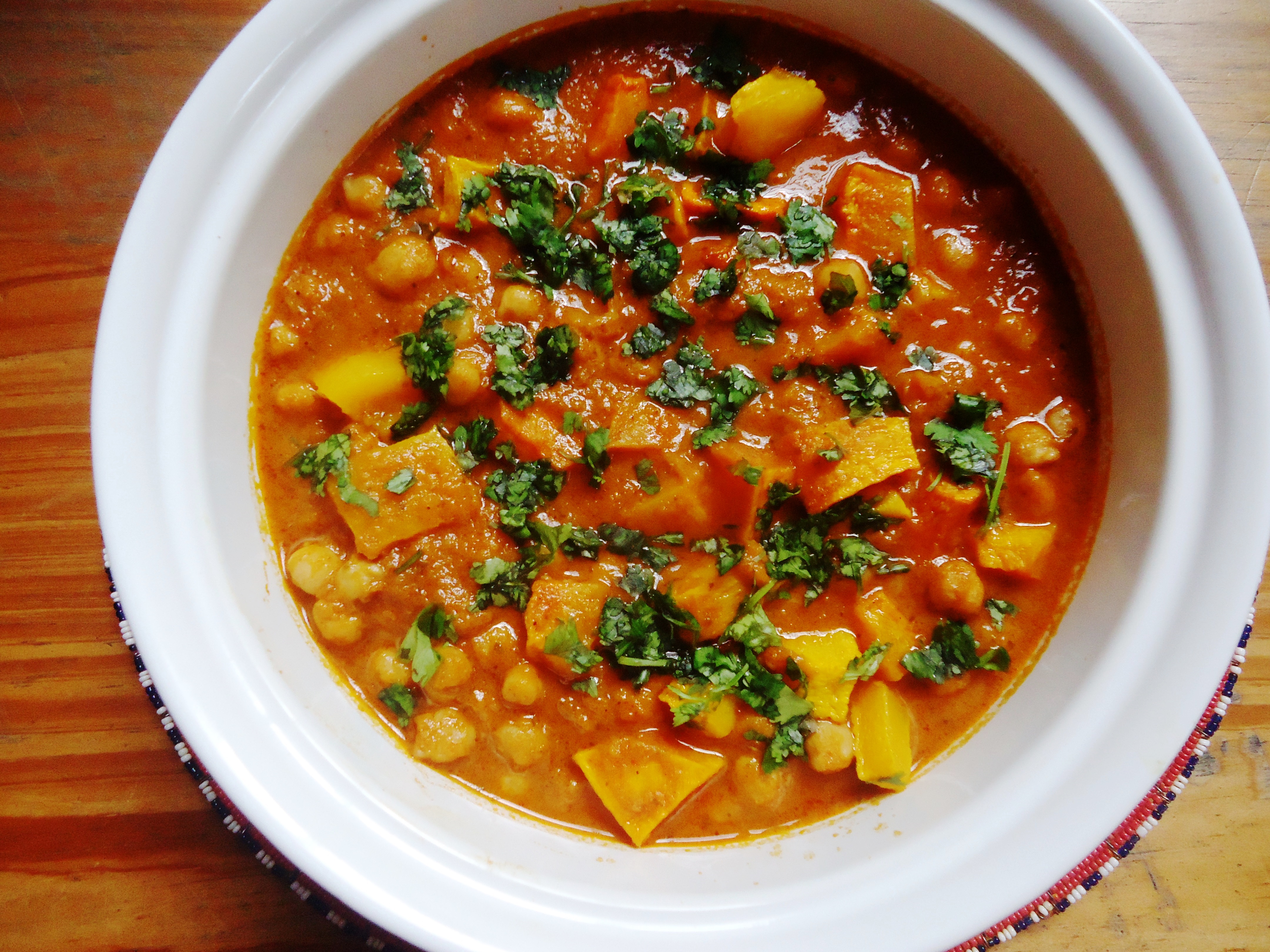Eating like Beyonce has become a whole lot easier… if you live in the United States that is. Queen Bey has launched a 22 days vegan meal delivery service. Supposedly making or breaking a habit takes 21 days, and thus, Beyonce believes you will be converted after 22 days of veganism.
Now, I don’t live in the United States and I certainly have no intentions of converting into full-time veganism. However, I would like to eat less meat and meat products and more plant based meals, so my goal is to transform myself into a semi-vegan if there is such a thing. For inspiration I go to the venture’s blog which happens to have an uploaded pdf version of booklet of vegan recipes. Have a look here.
I have adapted the butternut squash curry recipe but added chickpeas to boost protein levels.
Dry chickpeas will give you a far superior dish than any slimy bean out of a can. But beware; dry chickpeas are the most challenging pulse to cook as they require far longer cooking from scratch compared to other pulses.
Soaking is a must before cooking dry chickpeas. There are two methods, the first is soaking overnight for over 10 hours in twice the amount of cold water before boiling until tender. Alternatively, there is the speed soaking method whereby you place the chickpeas in a pot and cover with 2 inches of water, bring to the boil, then reduce the heat and let simmer for 4-5 minutes. Remove from heat and let the chickpeas soak in warm water for 1 hour. Drain the water and rinse the chickpeas. Put the chickpeas back in the pot and cover with water. Bring the water to the boil, let simmer on medium heat, covered, for an hour or until tender.
And after going through all the trouble of soaking and boiling chickpeas, I always boil at least 1½ cups and freeze what I do not use in this recipe.
Chickpeas can be quite gassy, so a trick I learned from my former flat mate Namrata , a South African of Indian origin, is to use a spice called Asafetida. This medicinal spice is used primarily as a digestive aid in Indian cooking. ½ teaspoon in a pot of any type of pulse can help lessen the flatulent side-effects of eating them. In Dar you can find it in most supermarket spice isles.
You will need:
- ½ cup dry chickpeas (around 1 ½ cups of cooked chickpeas)
- 1 medium-sized butternut squash (peeled, cored and cubed into 1 inch cubes yielding 2 cups)
- 1 large or 2 medium red onions (finely chopped)
- ½ tsp minced garlic
- 1 tsp minced ginger
- 3 tbsp Thai-inspired red curry paste
- 2 ½ cups coconut milk made from 1 large freshly grated coconut
- 2 tbsp tomato puree
- 1 tbsp Soy sauce
- 1 tbsp sunflower oil
- ½ tsp Asafetida
- 1 to 2 Tbsp fresh lime juice (to taste)
- Salt (to taste)
- Freshly chopped coriander leaves to garnish(optional)
What to do:
- Sort the chickpeas and clean them in plenty of water.
- Soak them in your preferred method of soaking (see above).
- Cook the chickpeas until tender (this will take at least an hour), keep adding water while boiling.
- While chickpeas ae boiling, prepare coconut milk.
- For my non-Tanzanian readers: to make coconut milk from scratch, we use a contraption called mbuzi . This is also the Swahili word for ‘goat’ so don’t get confused. This wooden stool has a serrated blade at the front. While sitting on it you clasp half a coconut firmly against it and move it in a back, forth and sideways scraping the white flesh off the shell into a dish. You do this until all the white flesh is scraped off the shell. The grated coconut is used to make milk or tui la nazi using a large bowl, a special metal strainer called chujio, medium hot water and elbow grease. The first rendering of the freshly squeezed coconut milk is always thick. This we refer to as tui la kwanza (the first tui). Subsequent rendering using the same grated coconut we refer to as tui la pili (second tui). This second rendering is much lighter. Normally I will put ½ cup of medium hot water for the first rendering to yield 1 cup of thick coconut milk. For the second rendering of coconut milk I will put around 1 ¼ cups of warm water to yield 1½ cups of coconut milk. My domestic assistant usually prepares the coconut milk for me.
- Heat sunflower oil in a large pan. Add the chopped onion and cook until soft and translucent (5 to 7 minutes).
- Add the garlic and ginger. Let them cook for about 1 minute. Add the curry paste. Mix ingredients together in the pan until the paste is evenly incorporated. Add tomato puree and asafetida.
- Stir in the second rendering of the coconut milk (the lighter coconut milk) and soy sauce. Add the cooked chickpeas, bring to the boil while stirring and then simmer uncovered for about 10 minutes. Be careful, the fresh coconut milk should not be cooked at high heat, requires stirring until brought to the boil and should never be covered. Otherwise you risk the coconut milk separating.
- Stir in the first rendering of the coconut milk (the thicker coconut milk), while stirring bring to the boil. Add butternut squash and let it simmer at medium to low heat for around 20 minutes or until butternut squash is cooked. You can add ½ cup of water if the mixture has reduced too much. Add lime juice and season to taste.
- Garnish with freshly chopped coriander leaves and serve with brown or white rice.











